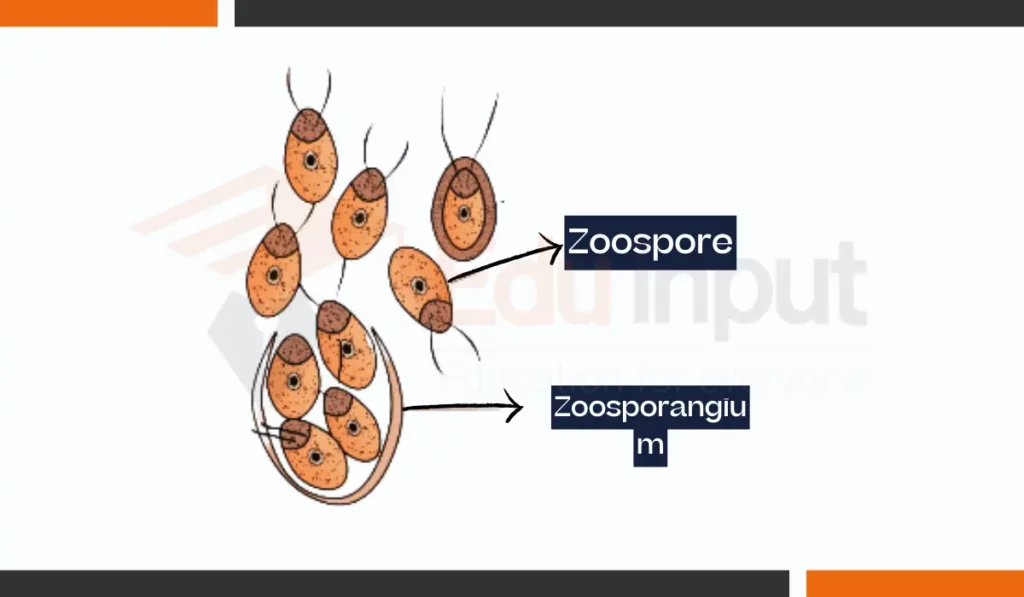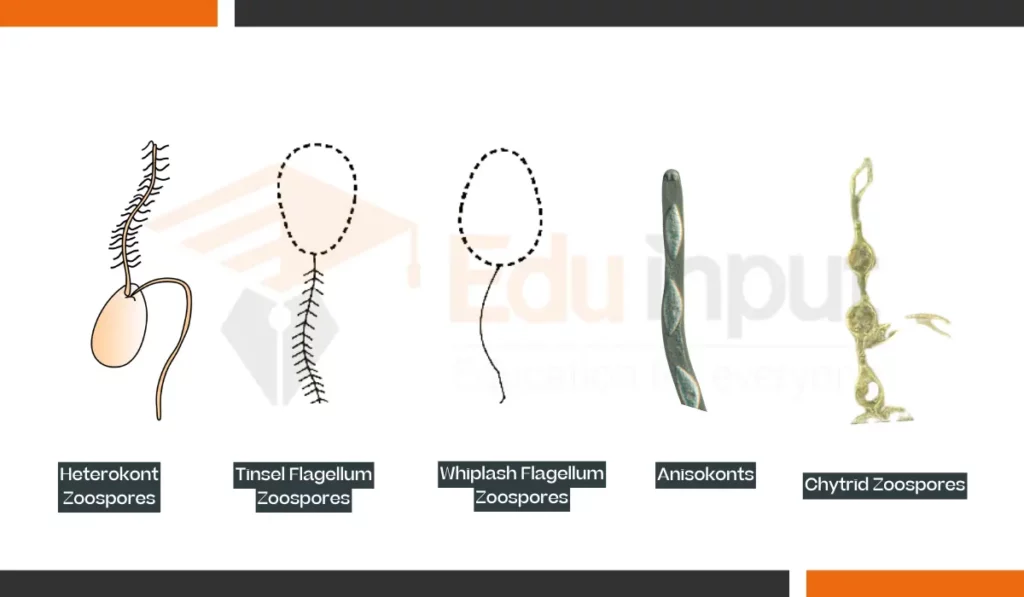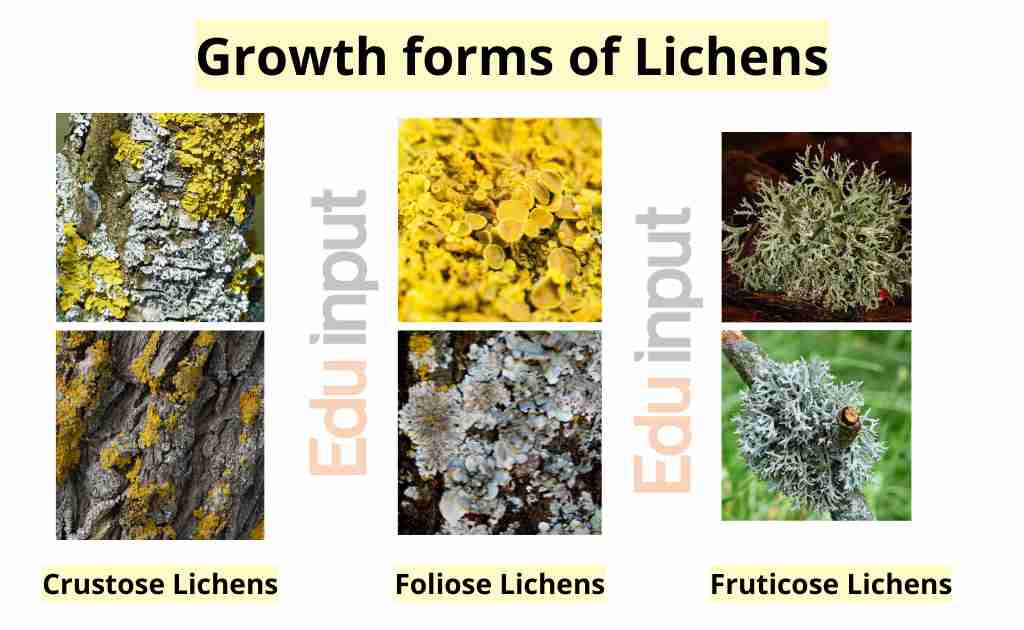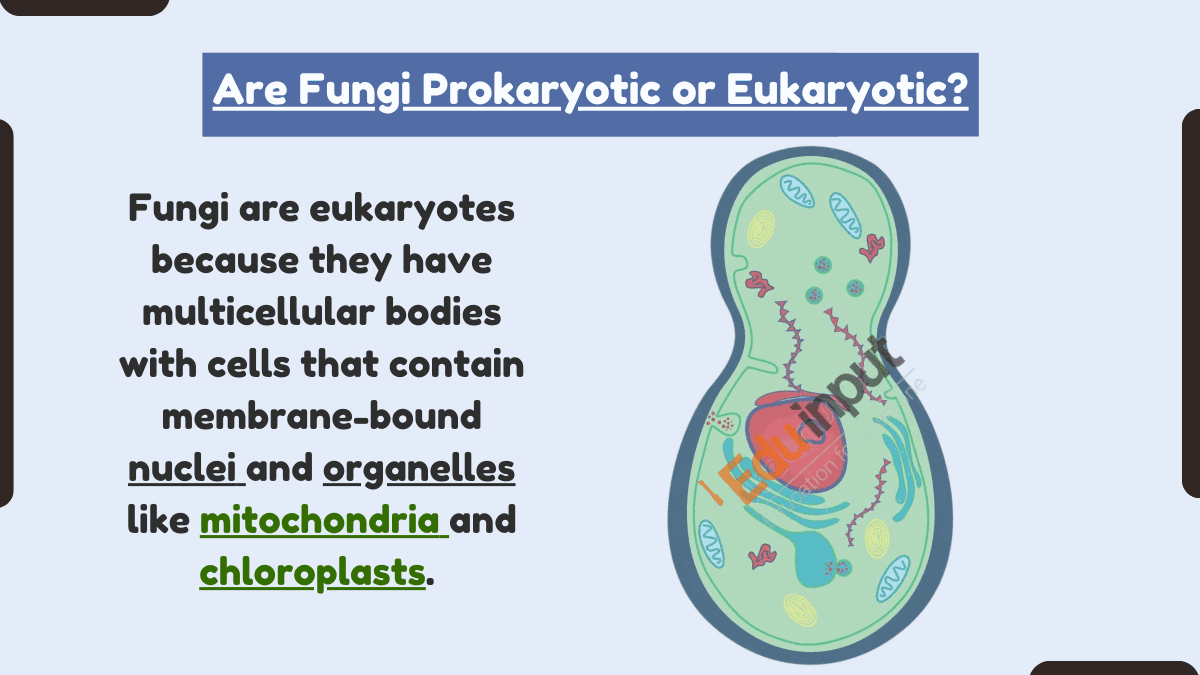What are Zoospores?-Characteristics, Types, and Swimming Patterns
What are Zoospores?
Zoospores are motile asexual spores, that use a flagellum for locomotion.
In microscopic organisms like bacteria, fungi, and protists, “zoospores” refer to tiny swimming spores that can move on their own.

Zoospores are spores with one or more whipping tail-like structures called flagella that let them swim. Unlike most spores, zoospores lack a thick protective wall which allows them to stay mobile. They use internal energy stores to keep swimming for hours, moving to new locations until they settle down.
Characteristics of zoospore
Here are properties of zoospores:
- Motile asexual spores
- Found in bacteria, fungi, and protists
- Flagellated
- Naked (lack a cell wall)
- Cannot divide
- Utilize endogenous food reserves
- Can swim for hours
- Shed flagella to encyst and form a wall
- Use environmental signals to travel to the site of encystation
Types of Zoospores
There are a few categories of zoospores based on their flagella arrangements and traits:

- Chytrid Zoospores: Have posterior whiplash flagella only. Some have up to 16 flagella!
- Anisokonts: Have two uneven flagella sizes. Seen in some fungal groups.
- Tinsel Flagellum Zoospores: Single anterior tinsel flagellum, as in some fungal species.
- Oomycete/Heterokont Zoospores: Have both tinsel and whiplash flagella, positioned front or sides.
Types of Flagella Used by Zoospores
Zoospores, the motile asexual spores of some algae, fungi, and protists, utilize flagella for locomotion. These flagella come in two main varieties:

1. Tinsel Flagella
These flagella are distinguished by their “hairy” appearance, adorned with perpendicular mastigonemes that resemble delicate filaments. The strategic positioning of these mastigonemes transforms tinsel flagella into miniature rudders, allowing zoospores to make precise directional changes and execute intricate maneuvers. Their role is akin to that of a skilled helmsman guiding a ship through challenging waterways.
2. Whiplash Flagella
In contrast to tinsel flagella, whiplash flagella are characterized by their sleek and smooth structure. Their primary function lies in generating thrust, propelling zoospores forward with unwavering efficiency. Particularly adept in uniform environments, whiplash flagella act as tireless oars, driving zoospores towards their destinations.
Swimming Patterns
The number and placement of flagella on zoospores determine the complexity of their swimming patterns. Some zoospores exhibit helicopter-like movements, rotating as they rise, while others resemble backstrokers with sixteen thrashing tails. These diverse swimming patterns are crucial for zoospores to navigate their aquatic environments effectively and locate suitable sites for encystation and subsequent reproduction.
FAQs
Do algae use bigflagellate zoospores?
Some algae do use bigflagellate zoospores, which are flagellated spores with a single large flagellum. These zoospores are typically used for sexual reproduction.
Do glomeromycetes zoospores?
No, glomeromycetes do not use zoospores. They reproduce asexually by means of spores that are dispersed by wind or water.
What fungus has zoospores and parasitizes insects?
There are many fungi that have zoospores and parasitize insects. One example is the fungus Entomophthora muscae, which parasitizes houseflies.
Why don’t plants have zoospores?
Plants do not have zoospores because they do not need them. Plants have other methods of reproduction, such as sexual reproduction with seeds and asexual reproduction with spores. Zoospores are only necessary for fungi that live in aquatic environments, where they need to be able to move around to find new hosts.
What fungi produces zoospores?
Many fungi produce zoospores, but some of the most common examples include Chytrids, Oomycetes, and Hyphochytriomycetes. These fungi are typically found in aquatic environments.
Why zoospores have lower log reduction than bacteria in UV treatment?
Zoospores have lower log reduction than bacteria in UV treatment because they are protected by a cell wall. This cell wall helps to absorb UV radiation, which prevents the UV radiation from damaging the DNA of the zoospore.

 written by
written by 



Leave a Reply